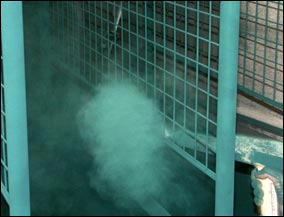Powder Coating Questions & Answers

How thick is powder coating?
How thick powder coating is depends on what it's used for.
- Flexibility: Like all paints, if flexibility is required then a thin coat of around 50 microns is applied. 40-60 microns is also a typical thickness for roof and wall cladding which may be bent or knocked.
- Corrosion Protection: Most powder coating is applied to thick steel where flexibility is unimportant. Generally the thicker paint film will offer more protection than a thin one. Where good corrosion protection is required, 150 to 250 microns is applied.
Powder coating thickness on motorbike frames is a compromise. The frame will take knocks but should not need to be flexible. 175 microns is ideal.
Does powder coating chip?
Powder coating applied badly will chip. This can be for a number of reasons:
- 1. Dirty metal, this can be from grease, original paint, rust, the metal needs to be clean.
- 2. Powder incorrectly cured; this leaves it very shiny but brittle.
- 3. Cheap paint. Good paint is expensive but is mechanically superior.
- 4. Applied too thick or not fusion-boded to primer correctly.
Does powder coating chip easier than stove enamel?
Stove enamelling chips easier than powder coating.
What is the hardest: powder or two-pack polyurethane?
Which is the hardest paint is the wrong question as hard means brittle. If it is hard it has no flexibility so when it is stressed through impact or pressured under a tightening bolt the paint will crack. A tough paint that is flexible is required.
How hard is powder?
Powder coating is not as soft as Nylon or PVC. Although sometimes referred to a plastic coating it looks and feels very similar to conventional wet paint. Unlike Nylon, which can be marked by pushing a thumbnail into it, powder is harder and will not mark easily.